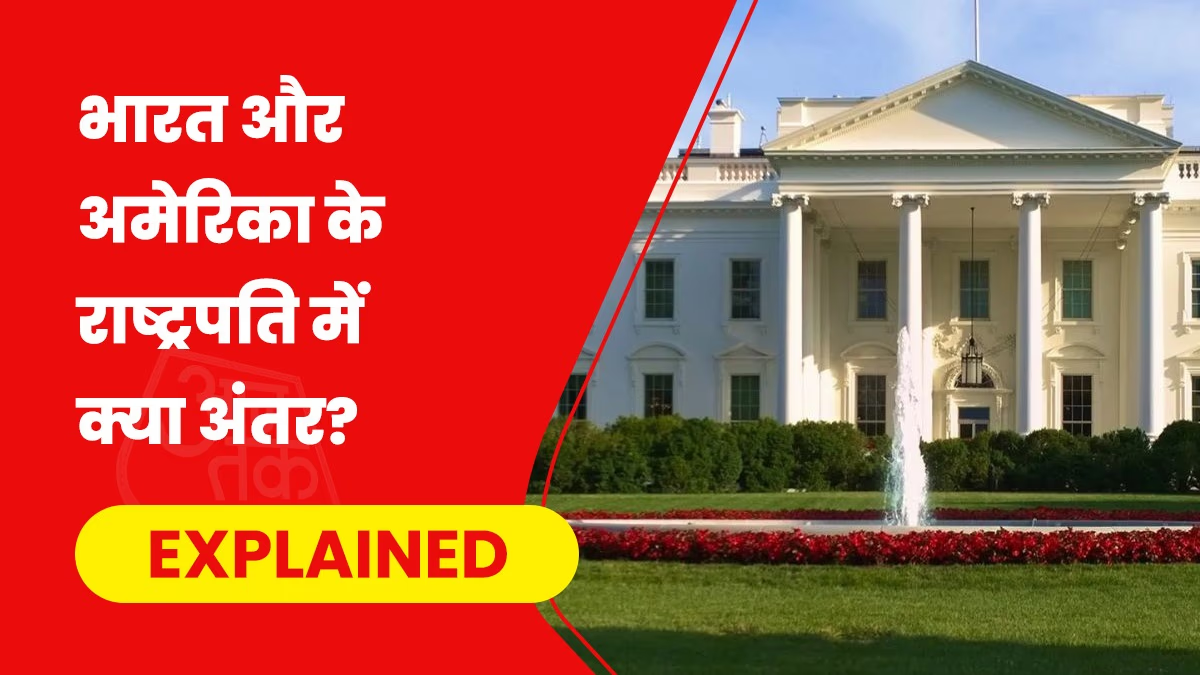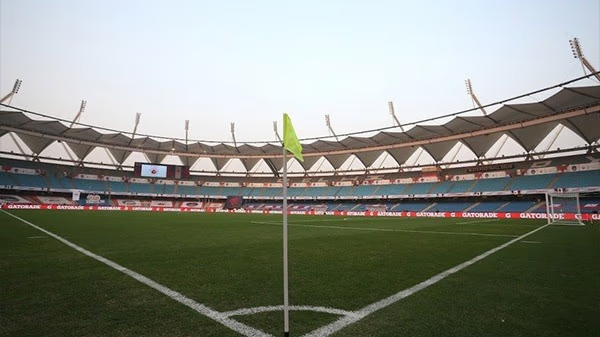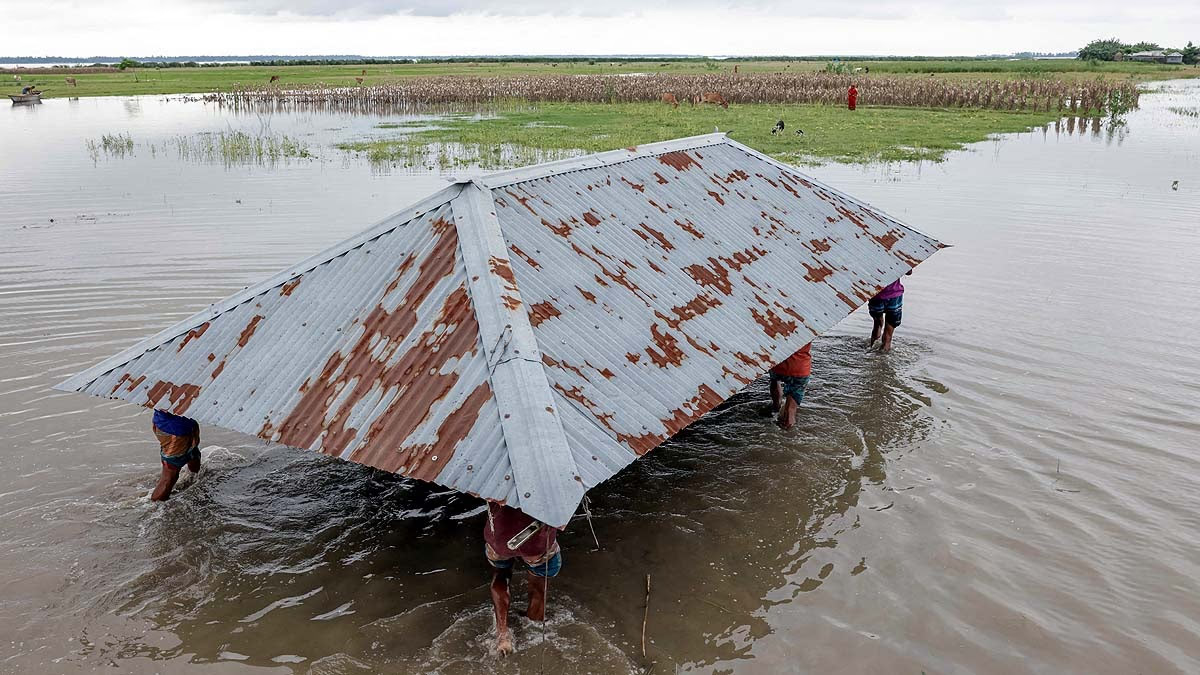US Presidential Election 2024
: America, the world's oldest democracy, is in the throes of a presidential election. The battle is fierce between Republican Donald Trump and Democrat Kamala Harris. Voting is underway, and soon the world will know who will lead the most powerful nation on Earth.
The US President is viewed as one of the most powerful leaders globally. The reason lies in America's status as not only the world's mightiest nation but also its influence over various international organizations.
The decisions made by the US President have worldwide repercussions. This is why presidential elections in the United States capture global attention.
As America gears up to welcome its new president, it's fascinating to compare the differences between the roles of the US and Indian Presidents.
Presidential Election Process
Unlike India, the US presidential election process is quite complex and intriguing. The ongoing voting in the US is not directly for Kamala Harris or Donald Trump but for electors who will eventually elect the president.
The 50 US states elect 538 electors, creating the Electoral College. The candidate receiving 270 or more of these votes becomes the president.
In contrast, the President of India is elected by members of the Rajya Sabha, Lok Sabha, and the Legislative Assemblies. During the 2022 presidential elections, 233 Rajya Sabha members, 543 Lok Sabha members, and 4,033 Assembly members voted, with the total value of all votes being 1,086,431. Each state's MPs and legislators have different vote values.
Furthermore, while Indian political parties or coalitions announce their presidential candidates without an internal election, in the US, internal party elections determine the presidential candidate.
Inauguration Date in the US
The presidential term in India is five years, while in the US, it is four years. In India, there is no limit to the number of terms a person can serve as president, whereas in the US, a person cannot serve more than two terms, equating to a maximum of eight years as president.
The US elections will conclude shortly, but the new president takes the oath in January 2025. The inauguration for the US President and Vice President is set for January 20, 2025.
In India, no specific date is set. The transition occurs when the outgoing president's term ends, such as when former President Ram Nath Kovind’s term ended on July 24, 2022, and Droupadi Murmu assumed office on July 25, 2022.
Unique Powers of the Indian President
According to Article 361 of the Indian Constitution, while in office, the President is not answerable to any court. They cannot be arrested, detained, or sued, neither in civil nor criminal matters. However, they can be liable for prosecution after leaving office.
This is not the case in the US, where the Constitution protects the president in civil matters but not against illegal or criminal acts, and investigations can proceed against them.
Similarly, an Indian president can be impeached for violating the constitution, with the requirement of a two-thirds majority in both houses of parliament to pass the impeachment resolution. In contrast, impeachment of a US president can occur if they are charged with treason, corruption, or serious crimes.
In 1967, the 25th Amendment was added to the US Constitution, allowing the president to be removed by their cabinet. This amendment states that if the cabinet deems the president unable to perform their duties, they can bring a proposal, which requires the vice president's endorsement, for removal.
Differences in Role Responsibilities
The President of India has limited powers, with real authority resting with the Prime Minister. The Indian president acts on the advice of the central cabinet but is the Supreme Commander of the Armed Forces. A bill becomes law in India only with the President's signature.
In the US, the president wields supreme power and can enact laws and orders without needing advice. The President is the head of state as well as the government, unlike in India, where the Prime Minister holds the governmental leadership.
If desired, the US president can veto any bill or proposal passed by Congress, although Congress can override this with a two-thirds majority.
Moreover, in India, the Prime Minister alone can authorize a nuclear strike, whereas in the US, the President has the power to issue such commands.
Salary Differences
There's a stark difference in the salaries of the US and Indian Presidents. The Indian President earns an annual salary of 6 million rupees, alongside benefits such as free medical care, telephone bills, housing, electricity, and other allowances.
The President of India is provided with a Mercedes-Benz S 600 Pullman Guard vehicle and is protected by a special guard known as the Presidential Bodyguard, consisting of 86 members.
Conversely, the annual salary of the US President is $400,000, equivalent to 33.6 million rupees. They receive an additional $50,000 annually for expenses and a $100,000 one-time amount for personalizing the White House. The US president also gets $19,000 per annum for entertainment and other expenses.
The security of the US President is managed by the Secret Service agents. They travel in the Air Force One aircraft and use a limousine called 'The Beast.' Manufactured by General Motors, this vehicle is regarded as the world's most secure car, capable of withstanding nuclear and chemical attacks. It is equipped with machine guns, tear gas systems, firefighting equipment, and night vision cameras, allowing it to be a formidable defense tool if needed.




